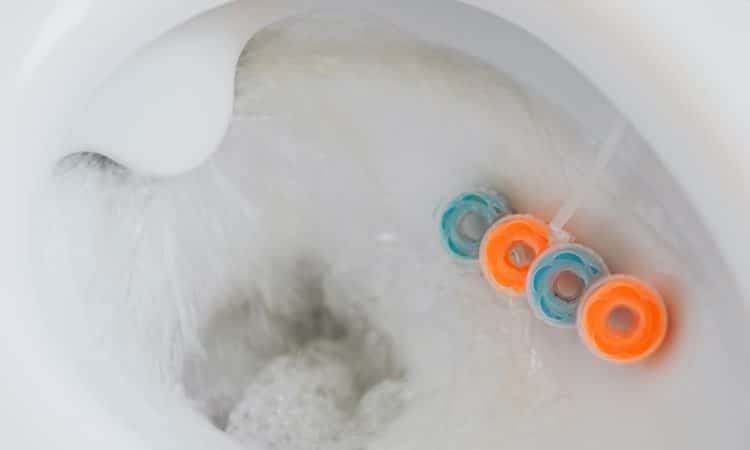
Everyone has probably heard the recommendation to close the toilet lid before flushing. A study published in the journal Scientific Reports found that this rule is necessary if you don’t want to be covered in germs.
Scientists from the University of Colorado at Boulder (USA) have used bright green lasers to illuminate the environment. The lasers were able to capture the release of a Vesuvius-like particle cloud that reaches more than 1.5 meters above the seat after the discharge is activated.
The researchers say that flushing with the lid open produces what is known as an “aerosol plume” – a large cloud of vapor particles that carry bacteria and other pathogens. The team only flushed the toilets with clean water and did not investigate the infectivity of particles that might be in the plume.
However, in everyday situations, the simple act of flushing with the lid open can lead to an explosion of droplets containing dangerous pathogens such as E. coli bacteria, norovirus and possibly even coronavirus.
Infectious disease specialist Roberto Martins Figueiredo, known to the world as Dr. Bacteria, posted a video on his social media page claiming just that. According to him, if you flush the toilet bowl with the lid open, “bacteria will run around the bathroom for hours and can contaminate toothbrushes, cosmetics” or other products displayed in the room.
Some of these particles can get directly on your face, get on your skin, or even come into contact with items in the bathroom – including your toothbrush.
In experiments, the researchers found that particles flying out during flushing can travel at a speed of 2 meters per second, reaching a height of 1.5 meters above the toilet bowl in just eight seconds. Large droplets settle on the surface after a few seconds, while smaller particles remain suspended in the air for several minutes.
These small particles were less than 5 micrometers (0.0002 inches or one millionth of a meter) in diameter, and could elude nose hairs and penetrate deeper into the lungs.
Overall, the study points out the need for toilets with lids in public places, and sends a message to people to actually heed the advice of their moms and close the lid before flushing. It also shows the importance of developing disinfection and ventilation strategies to reduce the risk of exposure to pathogens in public toilets.
Another study
However, another study conducted at the University of Arizona concluded that the lid closure measure had no significant effect on pollution.
In the new study, the researchers noted that “the benefit of closing the lid before flushing to reduce pollution has not been empirically demonstrated,” and under the leadership of researcher Stephanie Boone, set out to prove it.
The experiment was conducted with the bacterium E. coli and coliphage MS2, which is not a human or animal pathogen but serves as a convenient model. The researchers used an office bathroom as the stage.
In the end, it was found that there was no statistically significant difference between samples taken with the lid closed or open. The main difference between the two scenarios was the trajectory of the particle cloud: in the case of the closed lid, instead of soaring upwards, it makes a curve towards the ground.
“To our surprise, MS2 contamination from both the top and bottom of the toilet seat was low, regardless of whether the lid was closed or open at the time of flushing,” the researchers wrote. The fact that the test used a public toilet with a stronger flush allowed the particles to be flushed further away from their source, they suggest.
According to the study, using a disinfectant like lysoform in toilet water before flushing and cleaning dishes reduced contamination. Constant toilet cleaning, the researchers say, is especially important if someone in the home has a weakened immune system. If there is someone in the shared living environment who is infected with the virus, special attention should also be paid to disinfecting the bathroom.

